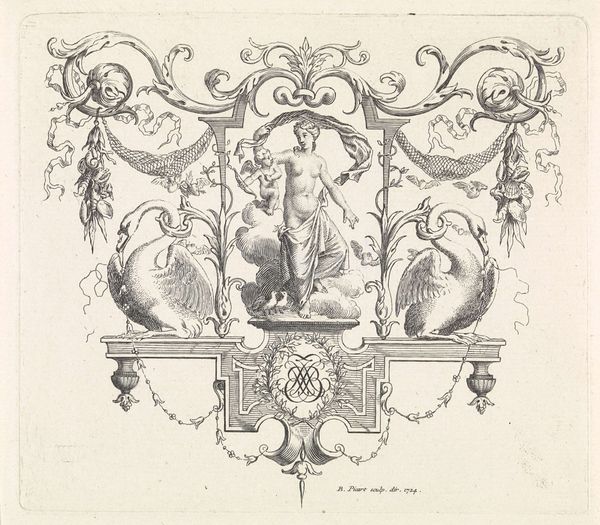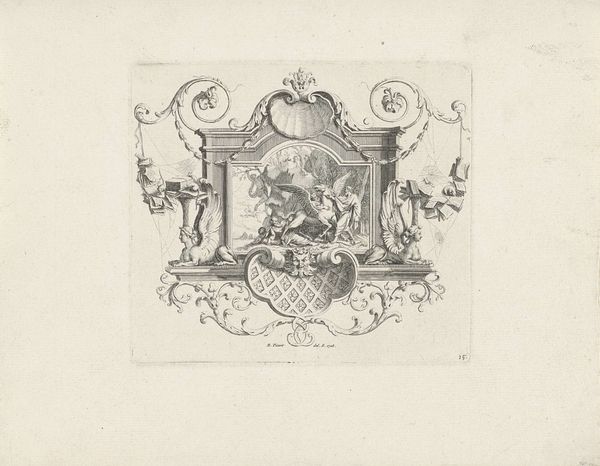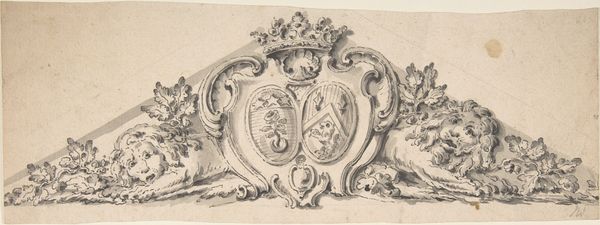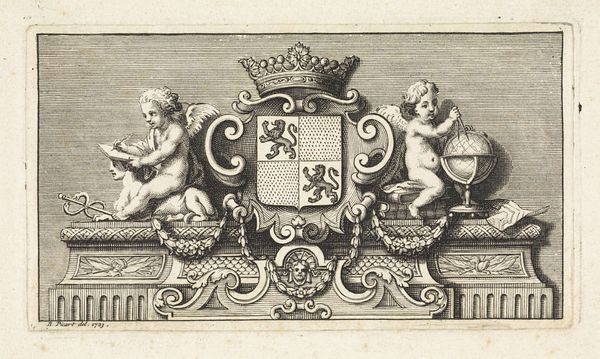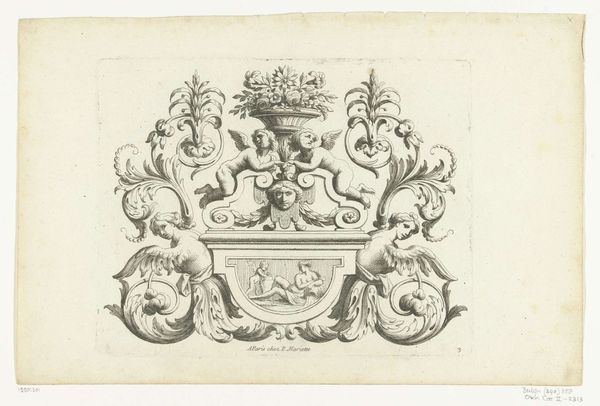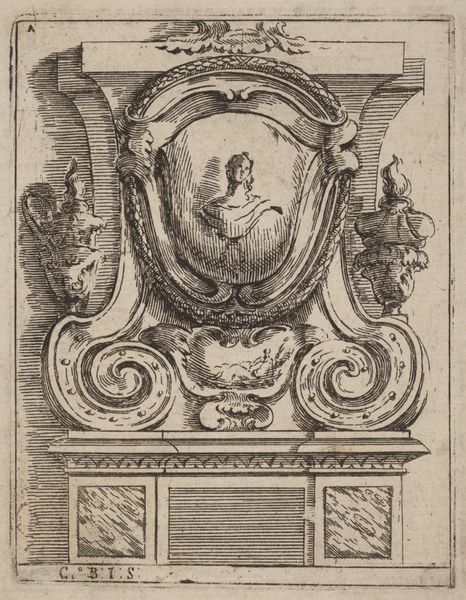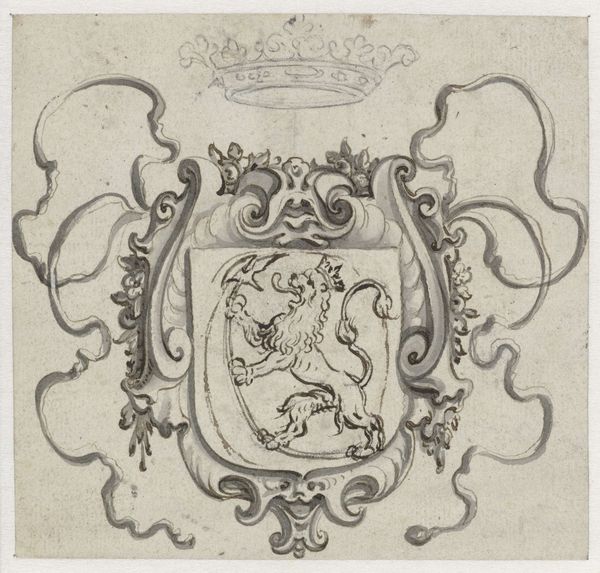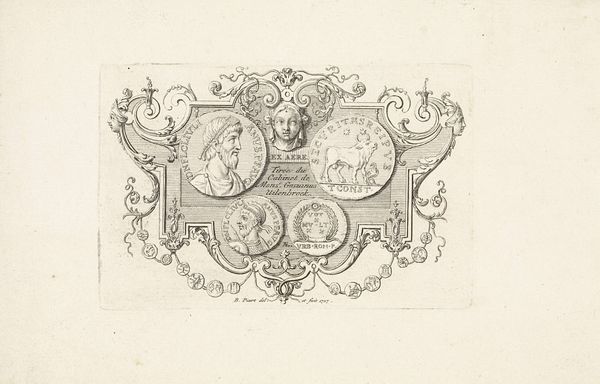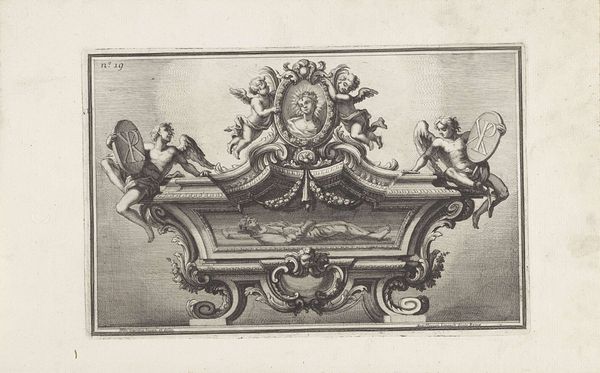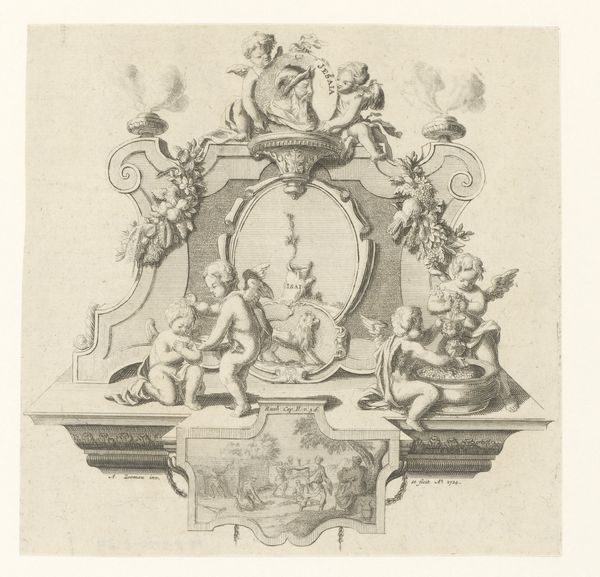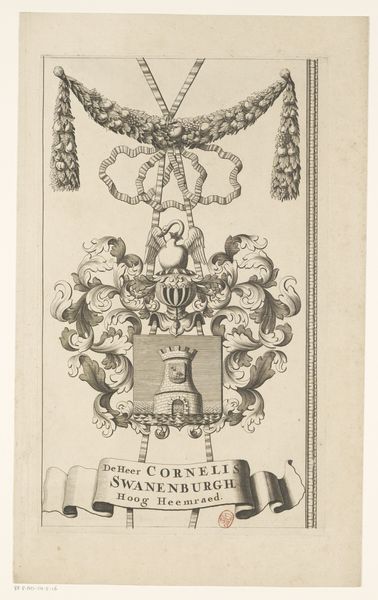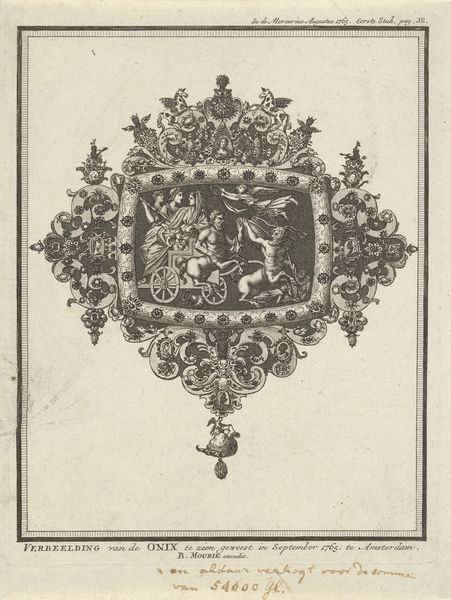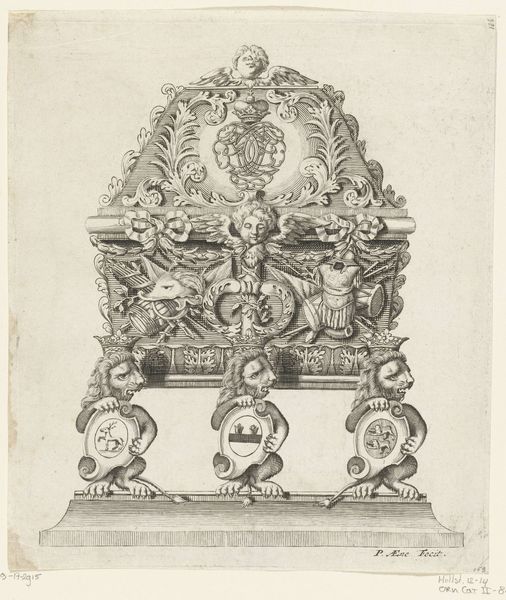
drawing, print, ink, engraving
#
drawing
#
medieval
# print
#
pen illustration
#
old engraving style
#
11_renaissance
#
ink
#
geometric
#
pen-ink sketch
#
line
#
pen work
#
sketchbook drawing
#
engraving
Dimensions: height 227 mm, width 287 mm
Copyright: Rijks Museum: Open Domain
Editor: This engraving, "Wapenrand van een kaart van de Alblasserwaard en de Vijfheerenlanden (deel)," dates back to 1716 and appears to be unsigned. It's a detailed study in ink and printmaking— the composition strikes me as quite ornate. What elements jump out at you? Curator: Initially, it is the balance. The crest, ribbons, lion and base; it achieves a harmonious arrangement. Look at how the artist contrasts textures; the smooth ribbons, the rough fur of the lion. How do you interpret this choice in materials? Editor: I think that those textural contrasts definitely heighten the visual interest. It prevents the composition from becoming flat. Is there any meaning or purpose behind the level of detail? Curator: Consider how each flourish contributes to the work’s complex layering, and examine the relationship between form and function. How does line dictate meaning within this piece? Editor: I hadn't considered how much the line quality impacts it, but I agree it emphasizes precision. So it's the deliberate application of these intrinsic formal choices, line, form and contrast that build its visual richness? Curator: Precisely. And do those help us consider a purpose? In a semiotic reading, we would consider that visual rhetoric carefully. The linear execution defines the crests elements within a rigid design, yet achieves fluid lines. This juxtaposition communicates controlled strength. Editor: That's fascinating; I now see a new depth to the image and what I originally viewed as just embellishment. I appreciate your viewpoint, Curator! Curator: The piece’s beauty lies in its structural elements. I am so pleased that we were able to unpack some of the formal vocabulary today.
Comments
No comments
Be the first to comment and join the conversation on the ultimate creative platform.
